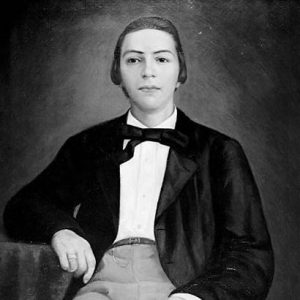calsfoundation@cals.org
Ten Mile House
aka: Stagecoach House
aka: McHenry House
The Federal-style Ten Mile House, located on Highway 5 in Little Rock (Pulaski County), is a rare example of a largely intact rural home of the early nineteenth century. The house has suffered few exterior alterations and retains four nineteenth-century outbuildings surrounded by a large parcel of wooded property. Ten Mile House was commandeered by Union troops during the Civil War and accommodated travelers on the Southwest Trail stagecoach line, earning it the alternative name “Stagecoach House.” The house is also referred to as the McHenry House after the original owner of the property, Archibald McHenry.
Twentieth-century newspaper articles and periodicals state that McHenry built a log home on land he had purchased in Pulaski County after moving from Tennessee circa 1820. A March 1832 advertisement for boarding horses on the McHenry farm, “10 miles south of Little Rock,” in the Arkansas Gazette indicated that the family had taken up residence on the Southwest Trail by that year. His children, John and Henry McHenry, later constructed a brick house adjacent to the reported log house. The Arkansas Gazette ad also provided the source of the brick home’s historic name, although it was not called the Ten Mile House at the time. Debate regarding the year that Ten Mile House was erected continues, with separate accounts giving dates from around 1825 to around 1836.
Archibald McHenry owned 1,432 acres of non-contiguous land along the Southwest Trail and in Crystal Hill (Pulaski County) by the early nineteenth century. In addition to farming, McHenry served as a grand juror, public building commissioner, Pulaski County coroner and justice of the peace in Little Rock. His sons inherited the land and slaves after his death in 1835. In 1842, John became acquainted with Robert Brownlee, James McVicar, and Sam McMorrin—Scottish stonemasons who came to Arkansas to work on the construction of the Old State House. The three men were between jobs at that time, so they periodically lived at McHenry’s house. Over a span of about six years, Brownlee and McMorrin constructed the brick kitchen and cellar of the Ten Mile House.
The situation of the house on the stagecoach line has led to the supposition that it served as a stop for travelers; however, this has not been documented. During the Union occupation of Little Rock in 1863, Ten Mile House was used as a military outpost by Union troops. That year, seventeen-year-old Arkansan David O. Dodd was held prisoner overnight in the smokehouse prior to transfer to Little Rock for his trial and execution.
Ten Mile House exhibits Early Georgian or Federal influence through the use of bridging between paired chimneys situated at each end of the house. Traits of the Federal style include simple, symmetrical proportions and large multi-paned windows. Ornamentation is minimal and is usually found around entries, windows, and cornice lines. A brick smokehouse, dairy house, well house, and kitchen house—all dating from the nineteenth century—remain on the property.
The Ten Mile House was listed on the National Register in June of 1970. Several families have owned the home since its early nineteenth century construction. It has served as a combination tea room/antiques store, a venue for public dinner parties and weddings, and a residence. The current owners purchased the house in 2001 for private use, and they have taken great care to preserve its historic exterior appearance.
For additional information:
Morgan, James. “Relentless.” Preservation Volume 56 (March/April 2004): 62–63.
Porter, Jack. “Ten Mile House.” National Register of Historic Places nomination. January 5, 1970. On file at Arkansas Historic Preservation Program, Little Rock, Arkansas.
Ross, Margaret Smith. “The McHenry Family: Pulaski County Pioneers.” Pulaski County Historical Review 3 (March 1955): 3–9.
Utley, Vivien Williams. “Arkansas Beauty Spots in Block Print.” Arkansas Gazette. Sunday magazine section. December 4, 1938, p. 6.
Holly Hope
Arkansas Historic Preservation Program
 Architectural Styles
Architectural Styles Transportation
Transportation David O. Dodd
David O. Dodd  Ten Mile House Outbuildings
Ten Mile House Outbuildings  Ten Mile House Interior
Ten Mile House Interior  Ten Mile House
Ten Mile House  Ten Mile House
Ten Mile House 



Comments
No comments on this entry yet.